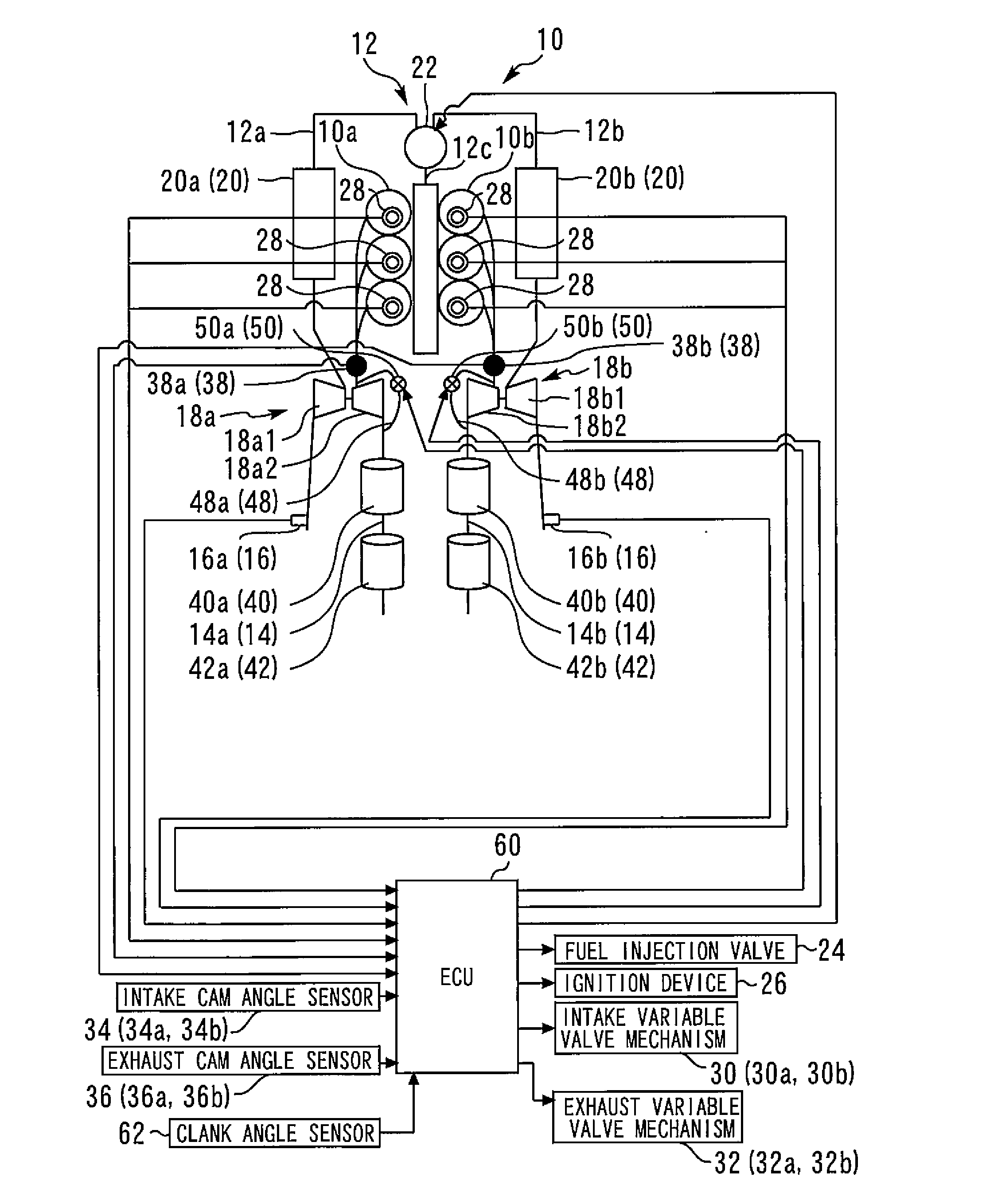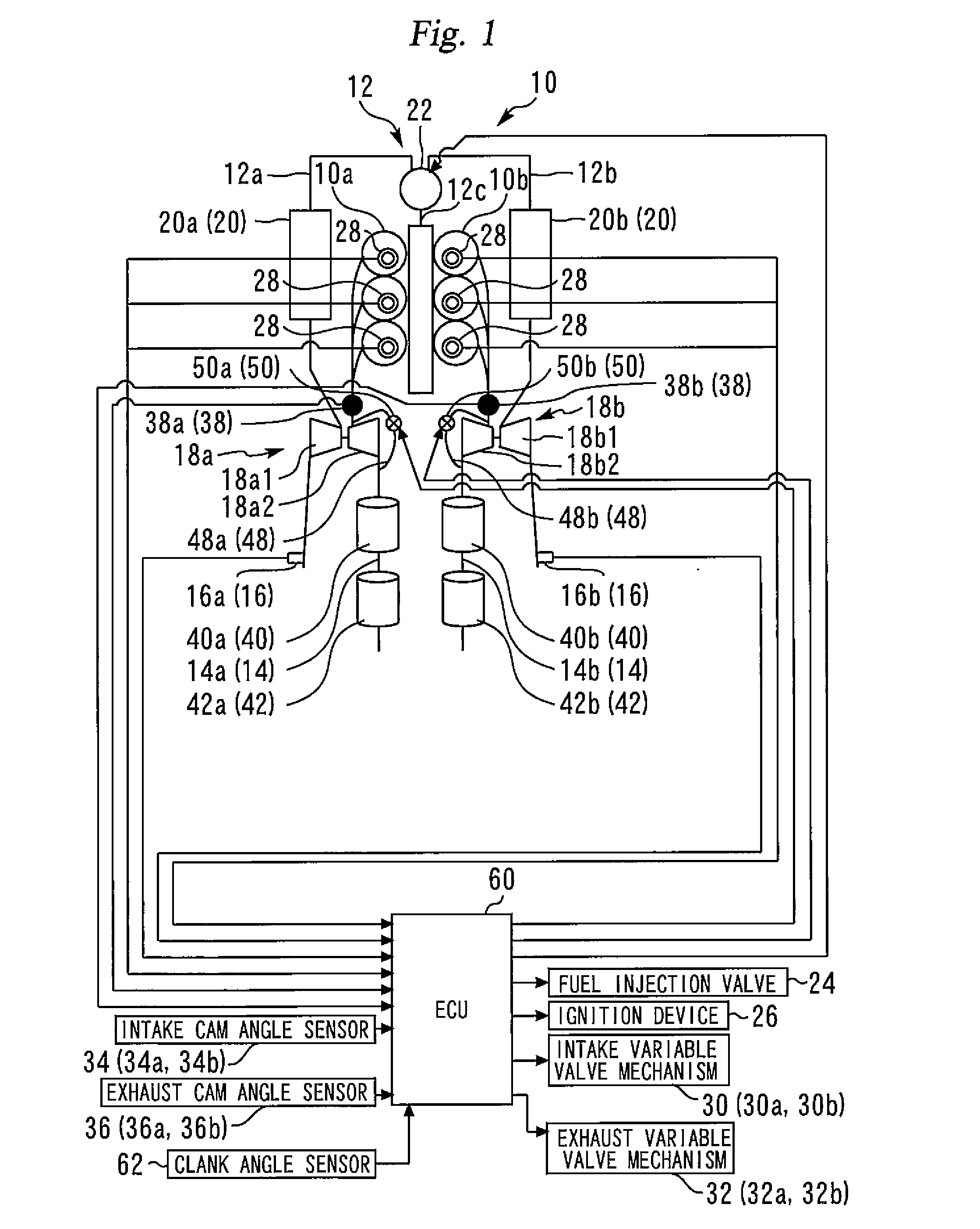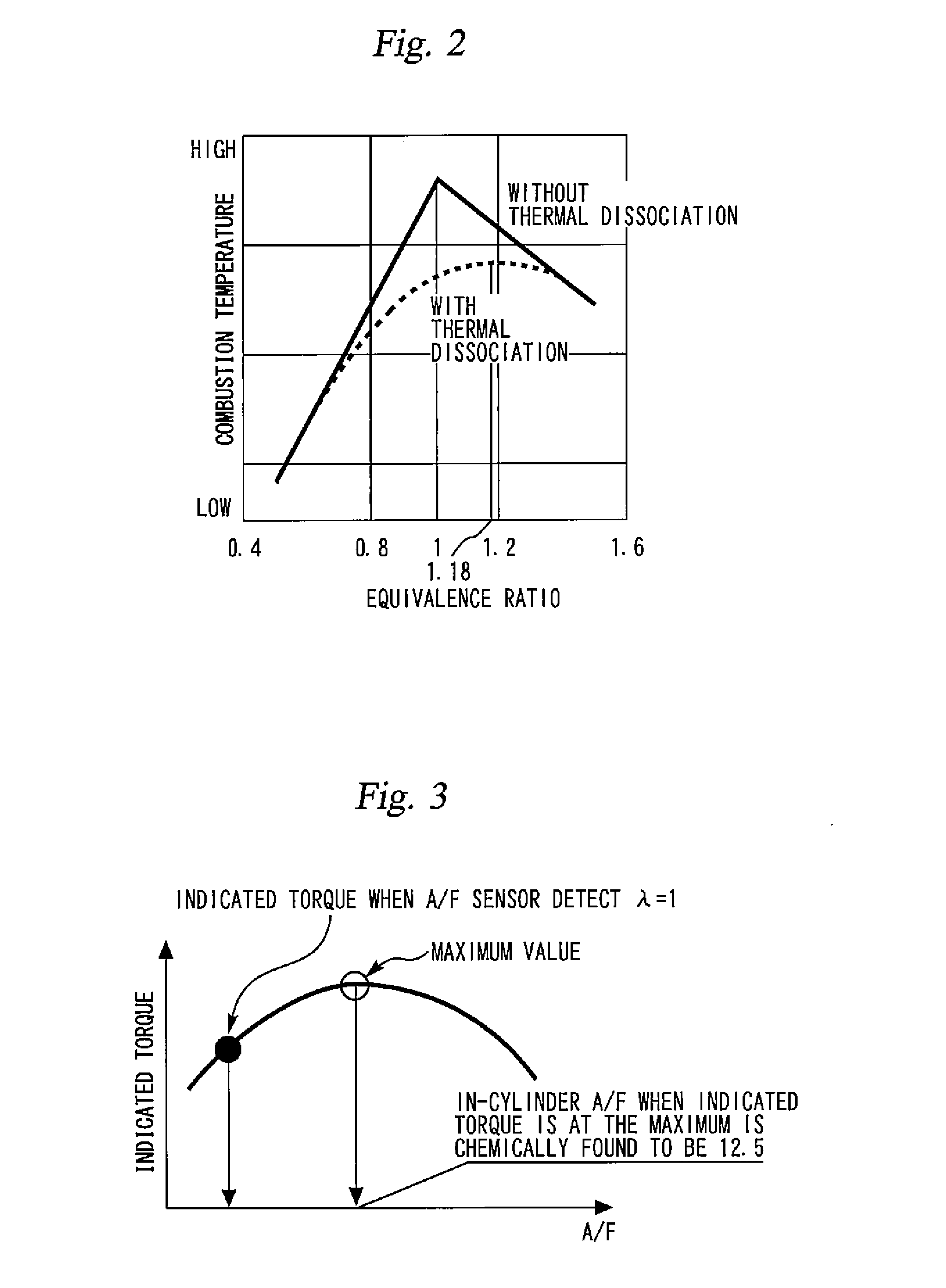Internal combustion engine and controller therefor
a technology of internal combustion engine and controller, which is applied in the direction of combustion engine, electric control, machines/engines, etc., can solve the problems of reducing torque or fuel efficiency, overheating of catalyst bed, and difficult to determine the scavenging amount, so as to reduce the difference of scavenging amount and accurate comparison
- Summary
- Abstract
- Description
- Claims
- Application Information
AI Technical Summary
Benefits of technology
Problems solved by technology
Method used
Image
Examples
Embodiment Construction
[System Configuration of Internal Combustion Engine]
[0017]FIG. 1 is a diagram for illustrating a system configuration of an internal combustion engine 10 according to an embodiment of the present invention. The internal combustion engine 10 is a V gasoline engine, for example. In particular, as shown in FIG. 1, the internal combustion engine 10 includes two banks (cylinder blocks): a first bank 10a including three cylinders and a second bank 10b including three cylinders. In the following description, components provided for the banks 10a and 10b will be denoted by reference numerals with a suffix “a” or “b” to indicate whether the components belong to the bank 10a or 10b, although the suffix “a” or “b” may sometimes be omitted if such differentiation is not needed.
[0018]The internal combustion engine 10 includes an intake air channel 12 that introduces air to each cylinder and an exhaust gas channel 14 through which exhaust gas discharged from each cylinder flows. More specifically...
PUM
 Login to View More
Login to View More Abstract
Description
Claims
Application Information
 Login to View More
Login to View More - R&D
- Intellectual Property
- Life Sciences
- Materials
- Tech Scout
- Unparalleled Data Quality
- Higher Quality Content
- 60% Fewer Hallucinations
Browse by: Latest US Patents, China's latest patents, Technical Efficacy Thesaurus, Application Domain, Technology Topic, Popular Technical Reports.
© 2025 PatSnap. All rights reserved.Legal|Privacy policy|Modern Slavery Act Transparency Statement|Sitemap|About US| Contact US: help@patsnap.com



